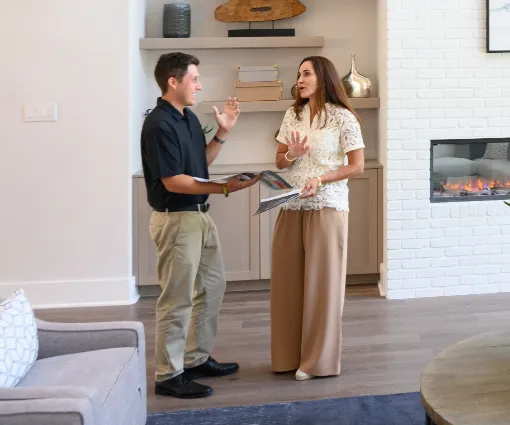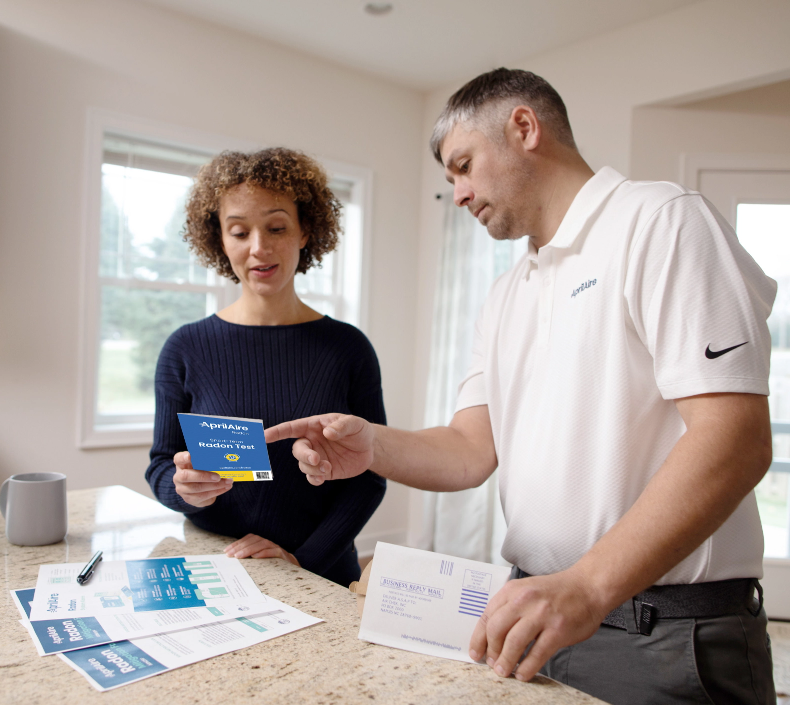Healthy Home Blueprint: Facts About Healthy Air
3 minute read
Did you know that the air inside your home could be up to five times more polluted than the air outside? That’s why a Healthy Home starts with Healthy Air!
Facts About Healthy Air: 4 Solutions for a Happy, Healthy Home
There are many elements that go into helping protect our homes from Indoor Air Quality concerns. In fact, the AprilAire Healthy Air System® includes all the award-winning solutions you need to create a Healthy Home environment:
- Fresh Air Ventilation
- Air Filtration
- Dehumidification
- Humidification
- Radon Control
- Temperature and IAQ Control
- UVC Sanitization
Facts About Healthy Air: Why Clean Air Matters
To create a Healthy Home, it’s important to consider introducing the above preventative measures to protect the air you and your family breathe at home from unwanted pollutants.
Remember, “when you’re thinking about a contractor or designer to work with, you want to make sure they’re also considering health issues,” states Veena Singla, NRDC Staff Scientist.
Pollutant Protection
With our homes having the potential to be up to five times more polluted than the air outside, it’s crucial to be on the lookout for volatile organic compounds (or VOCs) that can linger in the air and harm your health.
According to the EPA, VOCs can be present in a wealth of products used to build and maintain your home! Most commonly, items like paints, cleaning products, upholstered furniture, insulation, and adhesives contain harmful VOCs that can offgas.
Despite that, we can build and create a safe, Healthy Home environment that’s free from these dangerous contaminants. Preventative measures—like opting for ‘low VOC’ or ‘no VOC’ materials and products or introducing AprilAire whole-house Healthy Air solutions—can keep you protected.
Water Protection
In addition to pollution protection, creating a Healthy Home means enforcing moisture control through waterproofing and encapsulation to help prevent mold growth and home damage.
Healthy Home Dos & Don’ts
Promoting a Healthy Air environment in your Healthy Home is easy when you keep these important tips in mind!
DO: Ask questions and conduct research
It’s your home—and you should feel comfortable enough to do what you need to protect it. By researching or chatting with experts, you can get all the information you need to rid your home of pollutants or standing water, and ultimately, fill your home with Healthy Air.
DON’T: Forget to purify the air
With AprilAire whole-house air filtration solutions, like AprilAire Air Purifiers and Air Filters, you can protect the air inside your home from pollutants like VOCs and ozone.
DO: Be serious about humidity control
Kick too-high or too-low humidity to the curb with AprilAire whole-house humidity control. With AprilAire Whole-House Humidifiers and Dehumidifiers, you can specifically target excess or not enough moisture in your home’s air—keeping your Healthy Home thriving between 40% and 60%* humidity year-round.
DON’T: Rely on essential oils to improve Indoor Air Quality
Using essential oils can actually take a toll on your home’s air. As they aren’t regulated, the contents are a mystery and that’s not what we want to fill our homes with! To ensure you’re breathing safe, Healthy Air, use AprilAire whole-house Indoor Air Quality solutions.
DO: Clean regularly
To foster a Healthy Home, cleaning regularly is key to help remove excess dust, avoid allergy triggers, and more. Be sure to look out for low or non-VOC products when searching for new cleaning tools.
Final Thoughts
Creating a Healthy Home starts with these facts about Healthy Air! Because when you sleep better, stress less, protect from illnesses, and much more, there’s no end to the happy years you can spend with your family inside your home.
*While balanced humidity exists between 40 and 60%, it’s important to remember that outdoor temperature and other home factors will impact what relative humidity level is attainable and recommended for your house. Talk with your AprilAire Healthy Air Professional to learn more.

